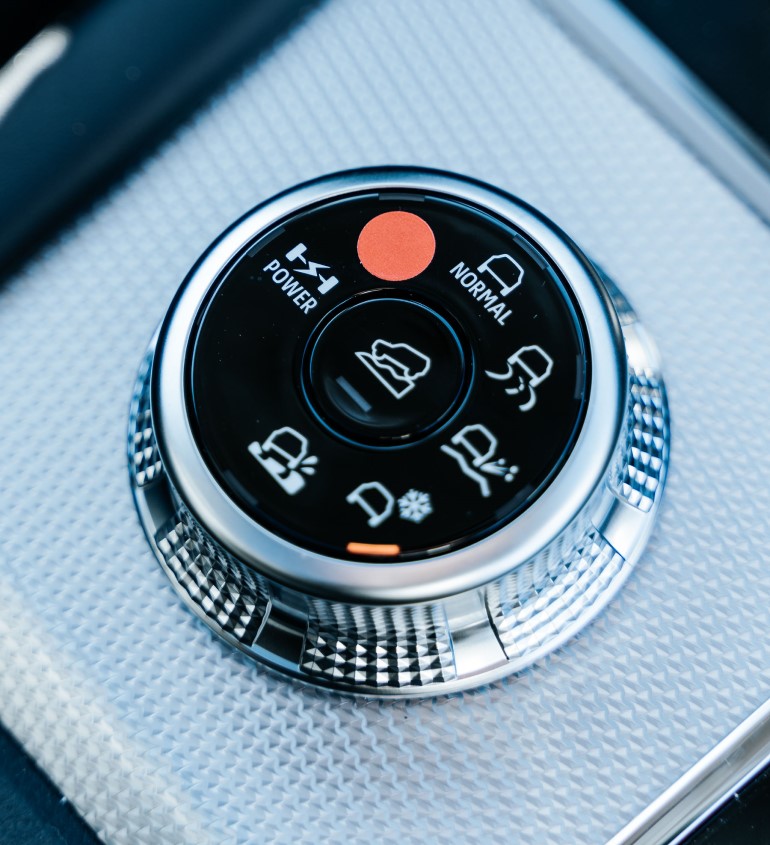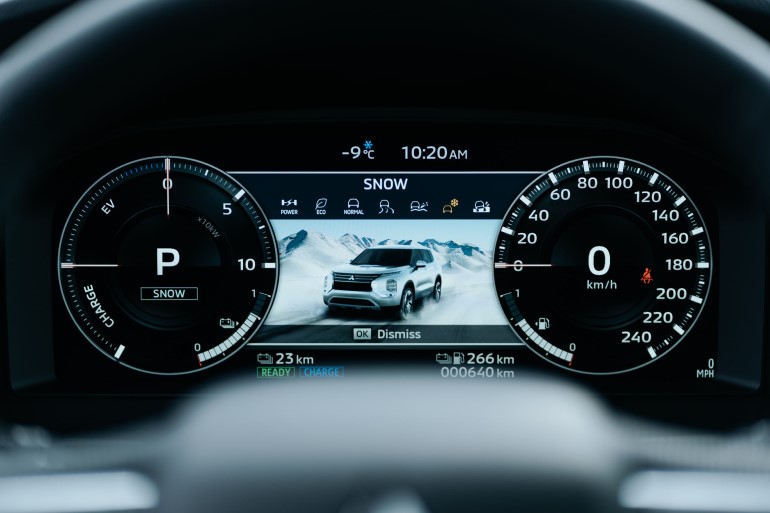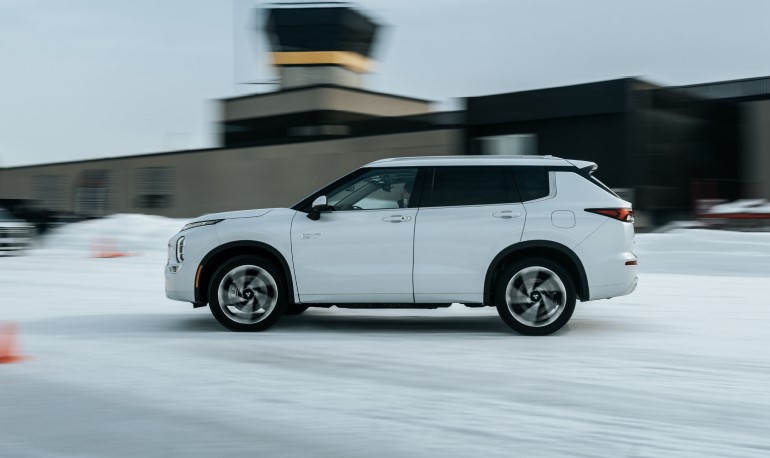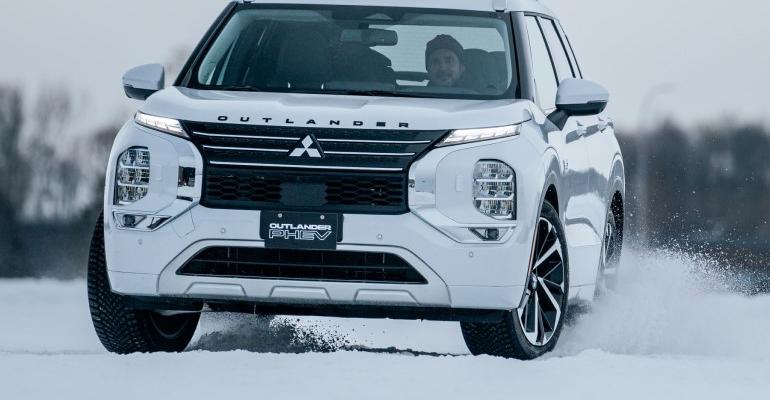MONTREAL – Depending on where your tracks take you, the winter of 2023-24 is either boom or bust. In parts of the West, deep snow keeps coming in waves. Elsewhere, there’s mostly mud.
It’s amid this unusual season that we find ourselves in Quebec, driving the ’24 Mitsubishi Outlander PHEV on mostly dry roads followed by some spirited spins around the frozen tundra on a former airfield outside the Canadian city.
PHEVs – plug-in hybrids – can be dull vehicles, combining a weak gasoline engine with a short-range electric system. Not the Outlander PHEV, which pairs a reasonably punchy 2.4L 4-cyl. internal-combustion engine with two electric motors, including a powerful rear-axle motor that plays a key role in slick-driving stability.
It’s that latter point that we’re here to sample, specifically the evolution of the Japanese automaker’s Super-All-Wheel Control from traditional ICE products into the Outlander PHEV’s electrified system.
In the PHEV version of S-AWC, it’s important to note that there’s no mechanical linkage between the front propulsion system – a 132-hp, 144-lb.-ft. (195-Nm) transverse-mounted I-4 and an 85-kW (114-hp), 188-lb.-ft. (255-Nm) motor – and the 100-kW (134-hp), 144-lb.-ft. motor driving the rear axle. Taken together, total output is 248 hp and 332 lb.-ft. (450 Nm). A small, 20-kWh lithium-ion battery is the power source for up to 38 miles (61 km) of electric driving range, as well as series hybrid locomotion.
This is where the Mitsubishi system starts to diverge from other PHEVs: Depending on speed, load and power demand, it can operate as a BEV, a series hybrid (with the engine functioning as a generator to provide power to the motors driving the wheels) or as a parallel hybrid (with the engine and motors driving the wheels in tandem).
The net effect is “our system is more like an EV in driving feel” in most driving situations, says Kentaro Honda, C-Segment chief vehicle engineer.
But back to S-AWC, the brainchild of Kaoru Sawase, Mitsubishi engineering fellow who is dubbed “the Godfather of S-AWC” going back to the first implementations of All-Wheel-Control in the late 1980s in racing. AWC, and later S-AWC, found its way into production in the Lancer Evolution in the 2000s with the latest iteration incorporating electric motors working in combination with the ICE.
Sawase walked through a series of highly technical graphics to explain the intricacies of S-AWC. But in summary, the net effect of S-AWC is to employ twin quick-reacting electric motors in combination with the ICE, 4-wheel antilock brake control and yaw and stability sensors to deliver confident traction, stability and handling, making driving less stressful regardless of road conditions.
In demonstration drives, we run slowly around an icy skidpad and quickly through a short cone course, sampling the Outlander’s response in three modes, Normal, Snow and an “S-AWC Off” setting that engineers created to simulate how a typical AWD vehicle would handle the conditions.
In our short drives, the system’s ability to manage longitudinal and lateral torque distribution is evident. Using S-AWC, it’s relatively easy to maintain a consistent arc on the skidpad at about 19 mph (30 km/h) without steering correction. In “S-AWC Off,” understeer arrives at about 14 mph (22 km/h) and requires active steering correction to stay on course.
Similarly, running at up to about 30 mph (48 km/h) in Snow mode it’s easy to stay on the icy cone course, but impossible to hold that velocity and make turns with S-AWC switched off.
Mitsubishi launched the latest Outlander in 2021, earning a 2021 Wards 10 Best Interiors award for the vehicle, which shares its architecture with the Nissan Rogue CUV. The PHEV was completely re-engineered for the ’23 model year.
While Mitsubishi doesn’t sell in the same volume as its competitors, the Outlander has been gaining popularity in the market, growing sales to 49,182 units in 2023, including 6,681 PHEVs, according to Wards Intelligence data. That’s up from about 34,000 sales in 2021, including just 2,250 PHEVs.
Whether S-AWC plays a part in the purchase decision may not be evident, but Mitsubishi is well positioned to gain traction with the Outlander PHEV just as the market for plug-ins is picking up.





